Armory 2022
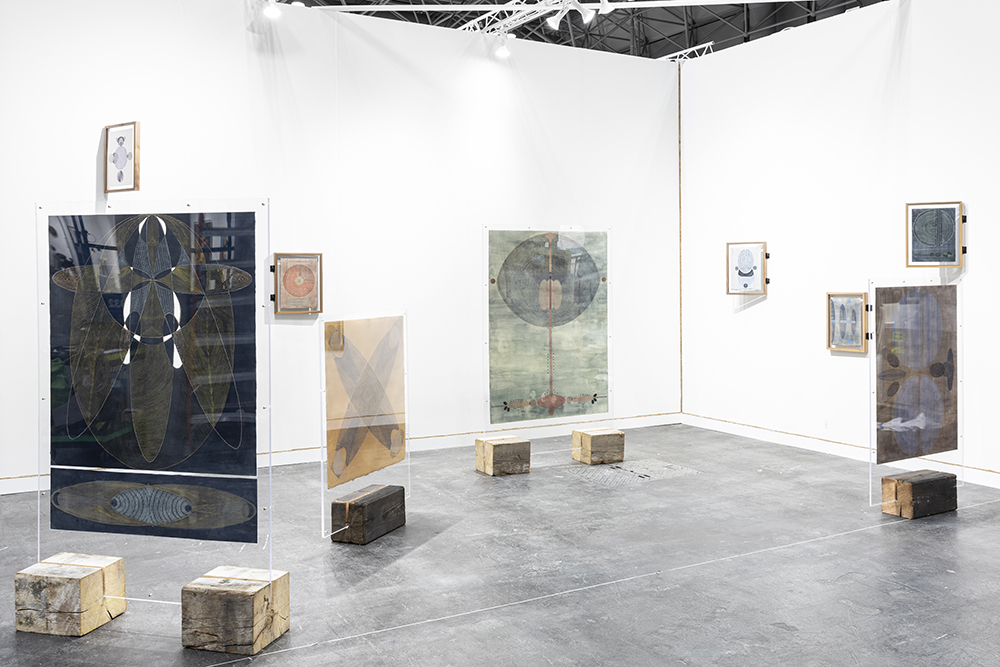
Johanna Unzueta
2022 Installation view Armory, New York Photo: Luis Corzo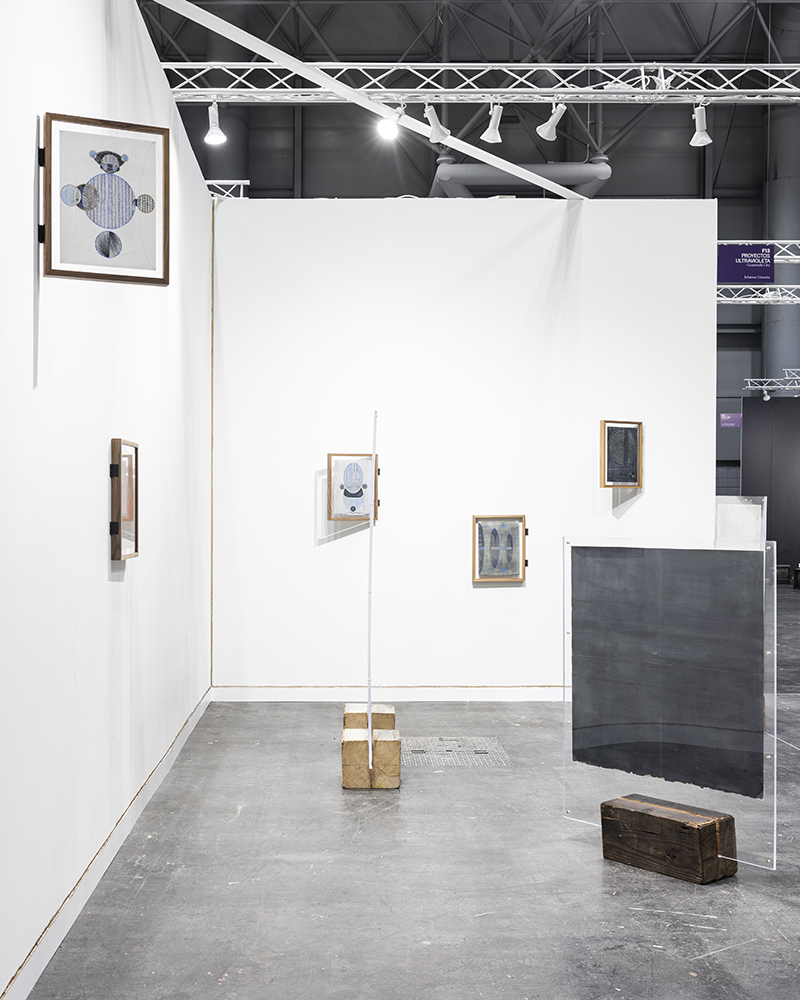
Johanna Unzueta
2022 Installation view Armory, New York Photo: Luis Corzo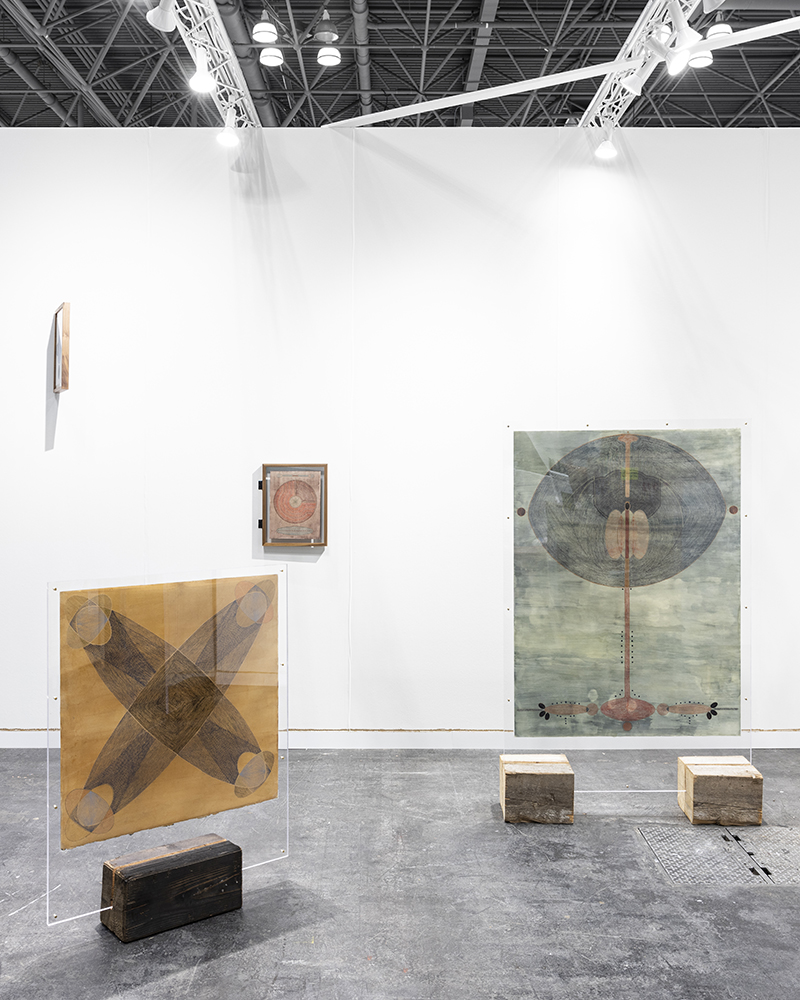
Johanna Unzueta
2022 Installation view Armory, New York Photo: Luis Corzo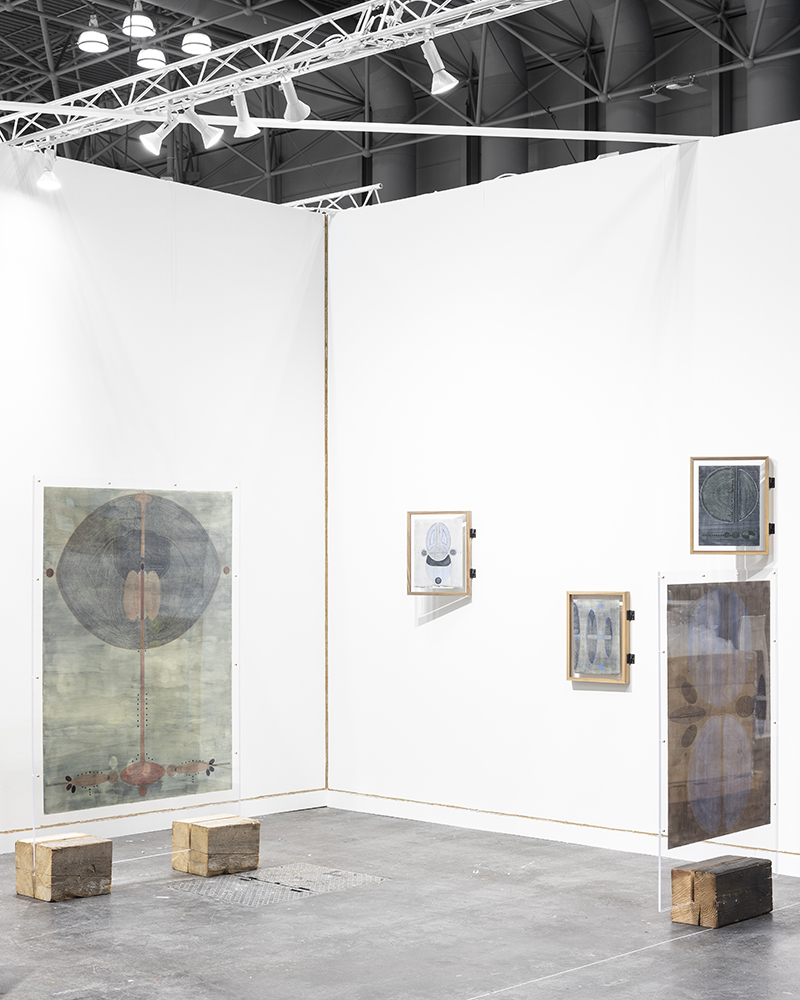
Johanna Unzueta
2022 Installation view Armory, New York Photo: Luis Corzo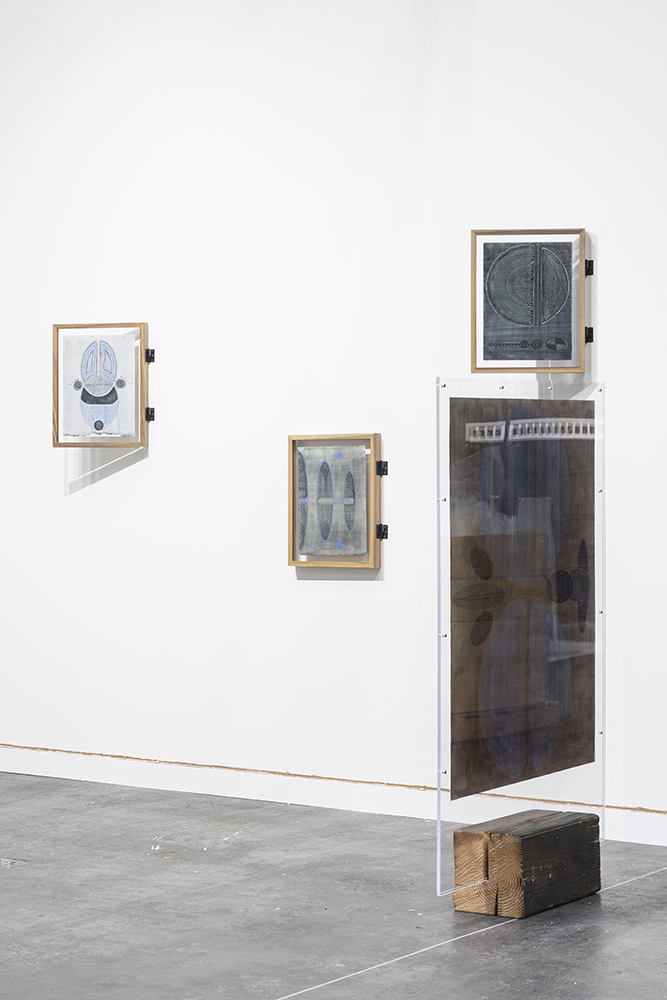
Johanna Unzueta
2022 Installation view Armory, New York Photo: Luis Corzo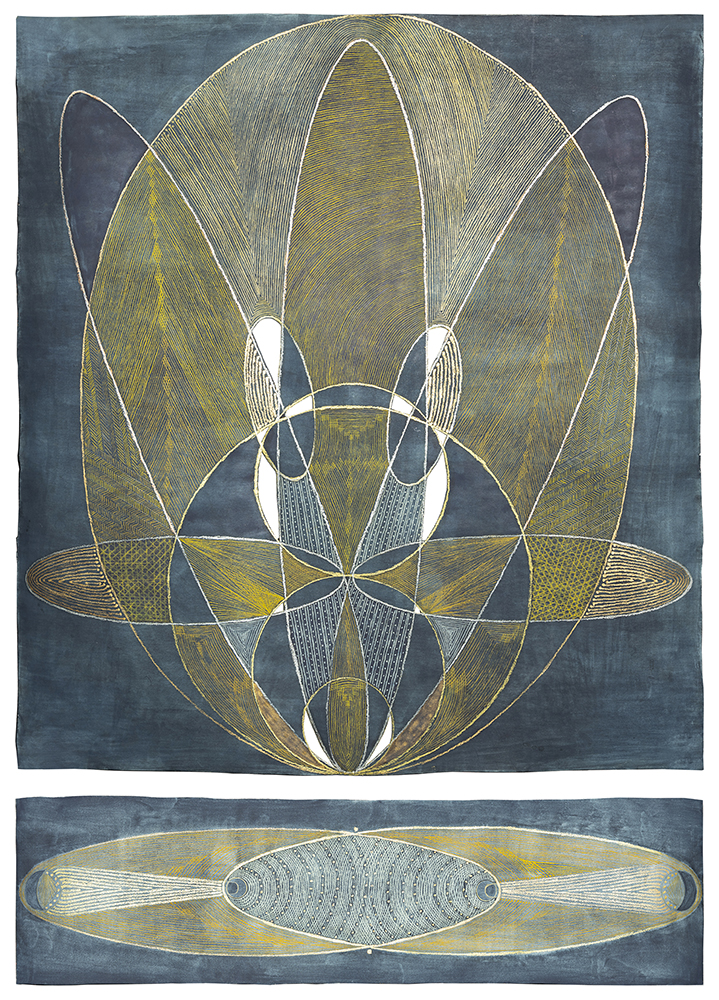
May, June Berlin 2021
(Front) 2021 Watercolor, pastel pencil, oil sticks, needle holes, and cut paper on indigo hand-dyed watercolor paper 55 x 39.5 in Photo: Luis Corzo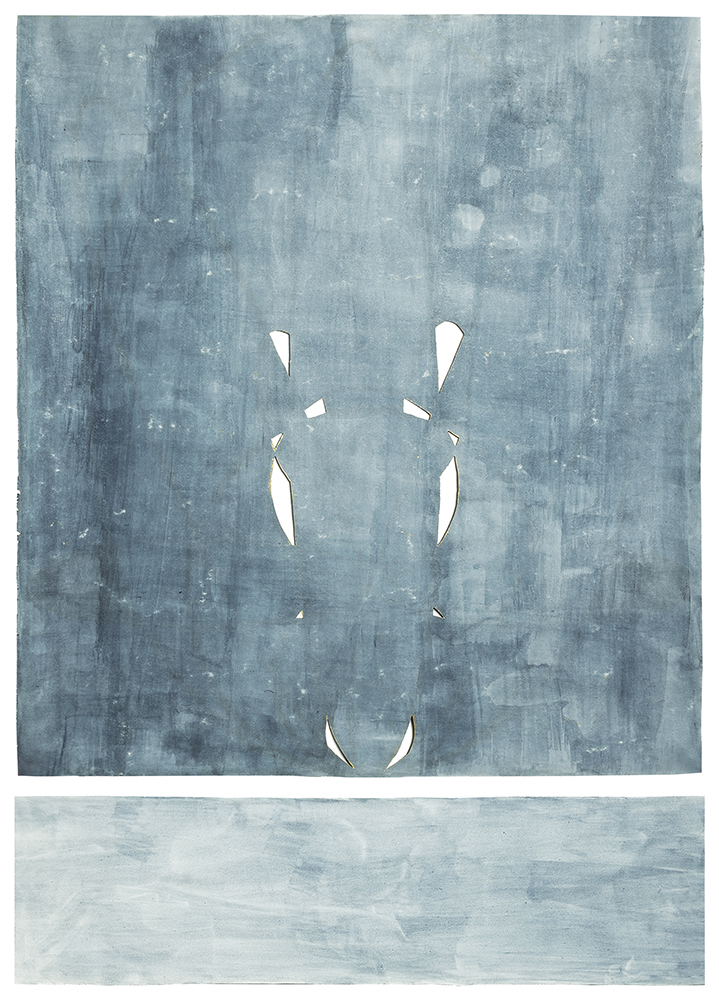
May, June Berlin 2021
(Back) 2021 Watercolor, pastel pencil, oil sticks, needle holes, and cut paper on indigo hand-dyed watercolor paper 55 x 39.5 in Photo: Luis Corzo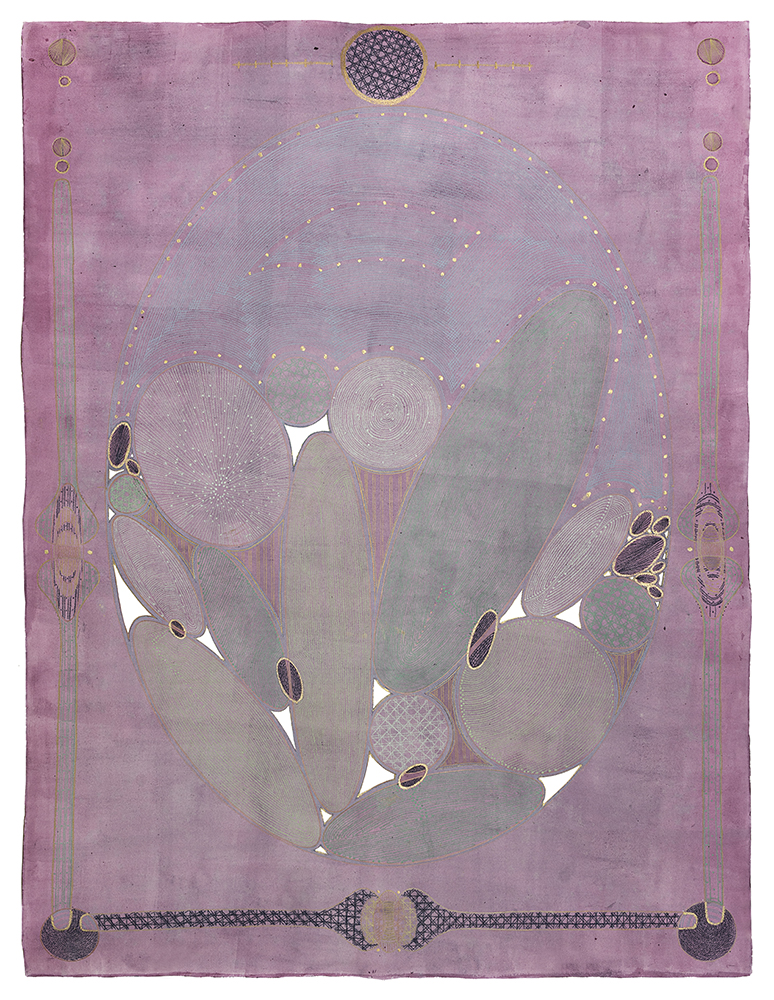
October Zwischendeich 2021
(Front) 2021 Watercolor, pastel pencil, oil sticks, needle holes and cut paper on tinted watercolor paper (wild berry/ Kratzbeere) 60 x 45 in Photo: Luis Corzo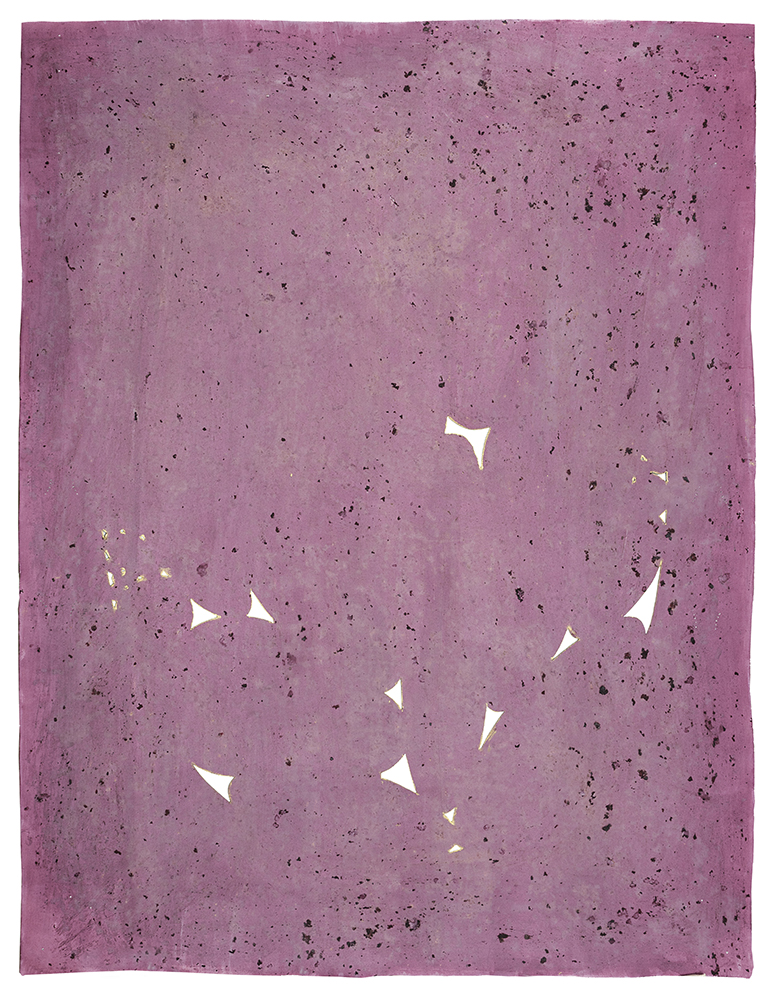
October Zwischendeich 2021
(Back) 2021 Watercolor, pastel pencil, oil sticks, needle holes and cut paper on tinted watercolor paper (wild berry/ Kratzbeere) 60 x 45 in Photo: Luis Corzo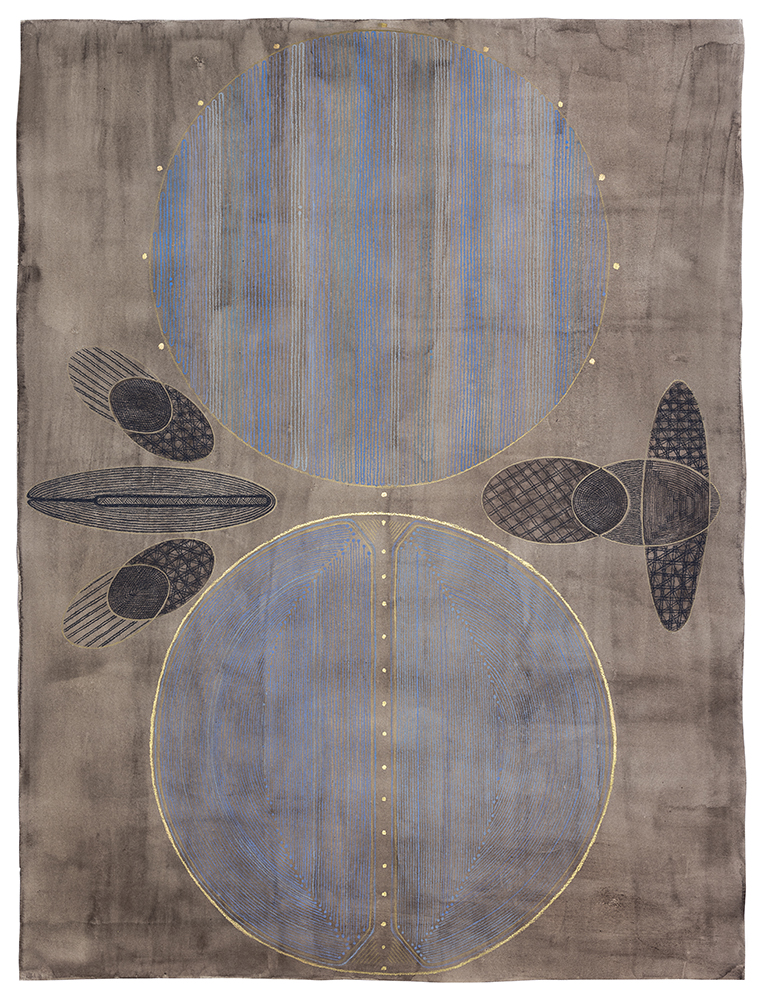
October 2020 / February 2021 Berlin
(Front) 2021 Watercolor, pastel pencil, oil sticks and pin holes on wild berries hand-dyed paper 42.9 x 32.7 in Photo: Luis Corzo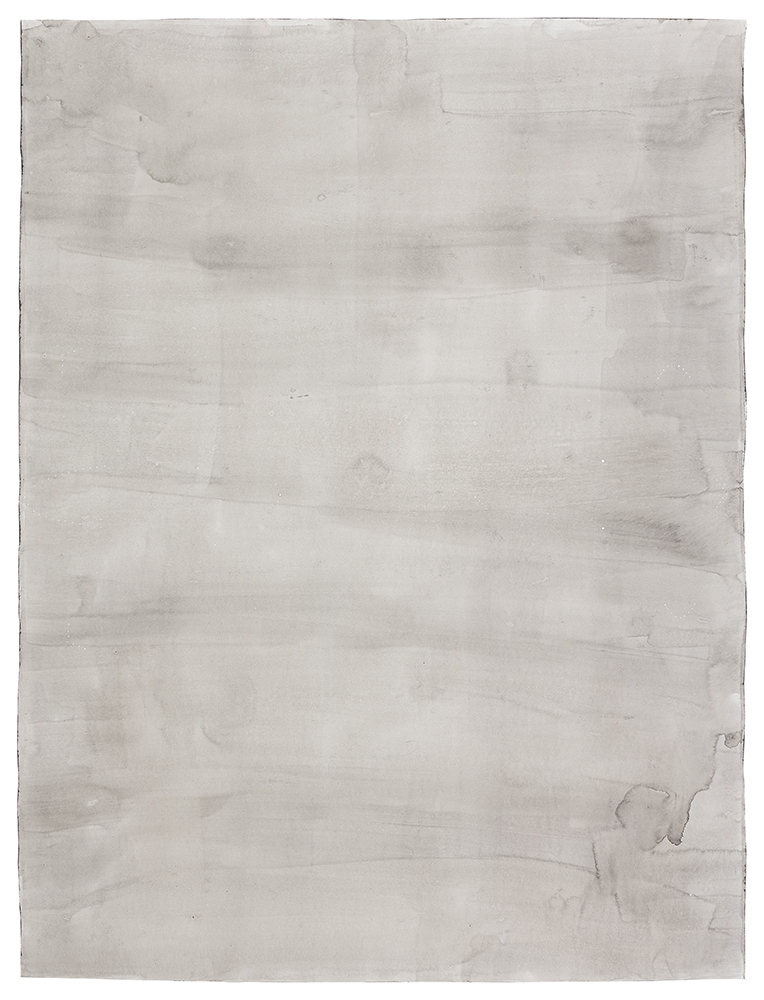
October 2020 / February 2021 Berlin
(Back) 2021 Watercolor, pastel pencil, oil sticks and pin holes on wild berries hand-dyed paper 42.9 x 32.7 in Photo: Luis Corzo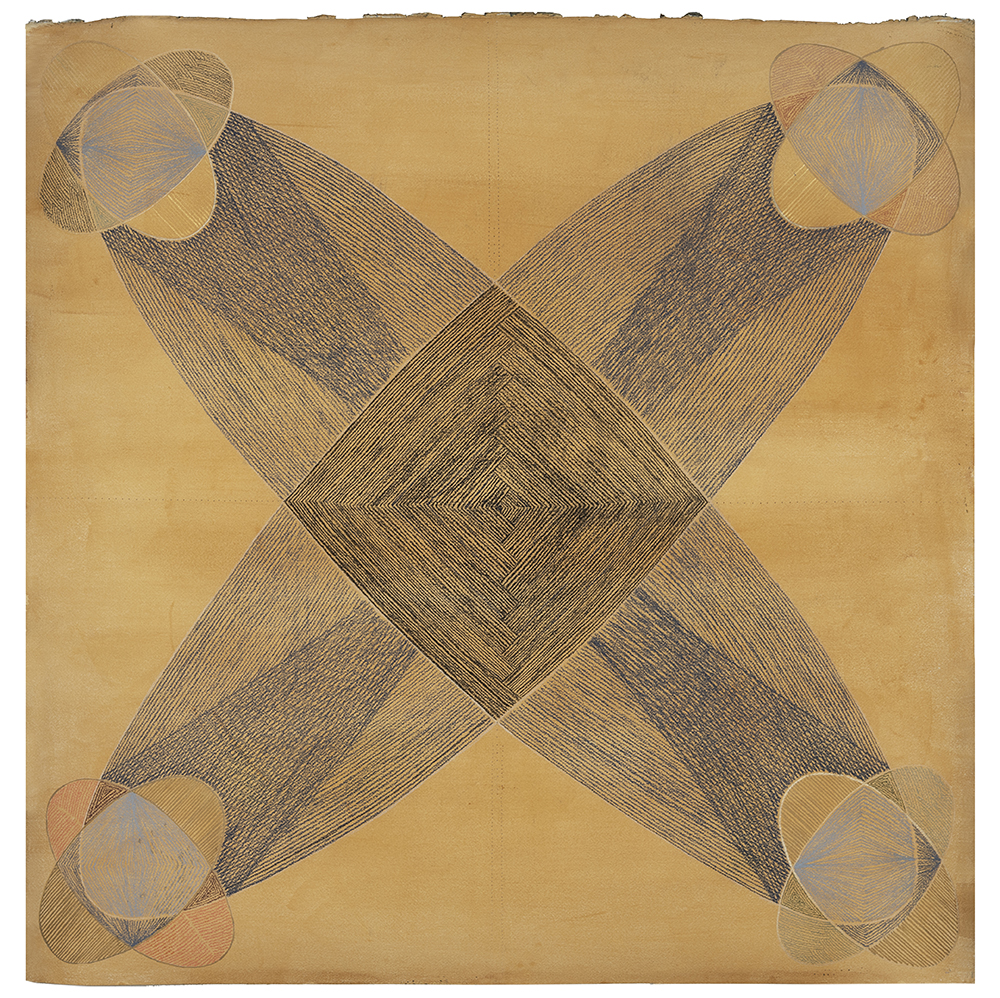
February, March 2019 NY
(Front) 2019 Watercolor, pastel pencil, oil sticks, needle holes on indigo and fustic hand-dyed watercolor paper 35.4 x 35.4 in Photo: Luis Corzo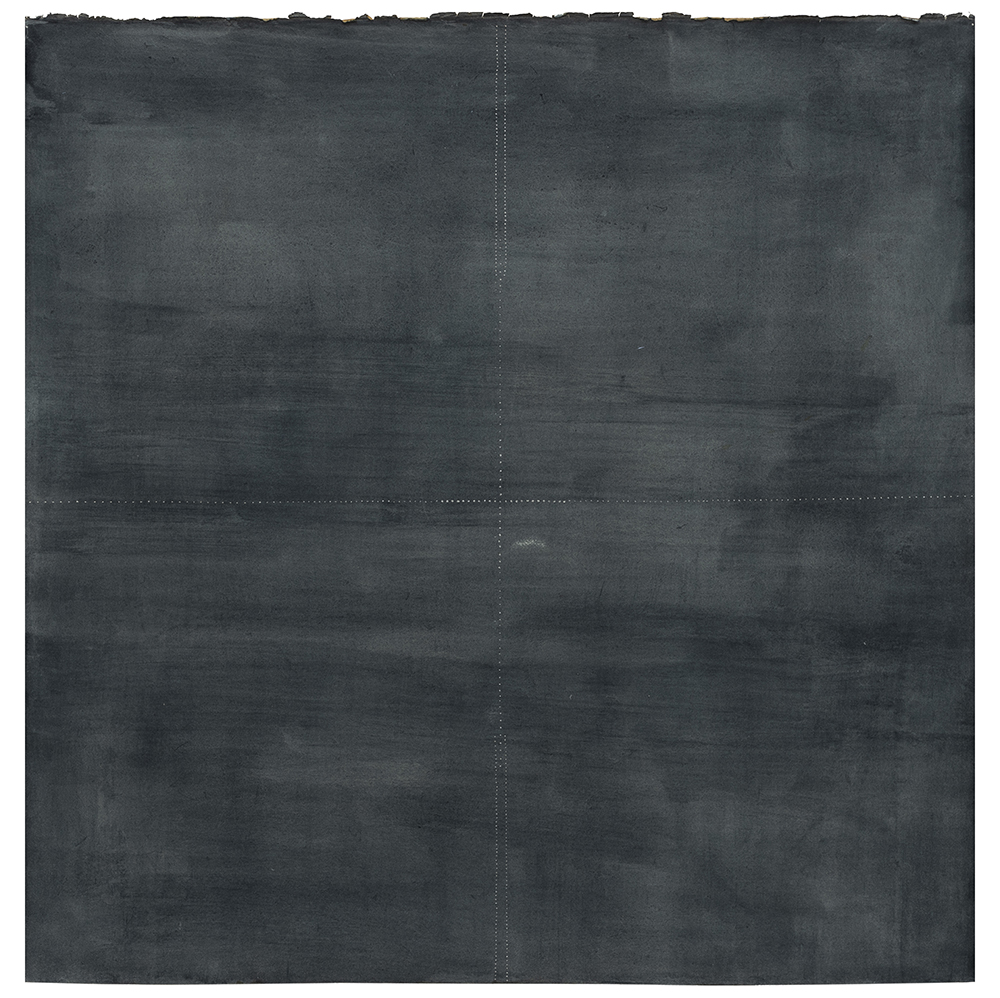
February, March 2019 NY
(Back) 2019 Watercolor, pastel pencil, oil sticks, needle holes on indigo and fustic hand-dyed watercolor paper 35.4 x 35.4 in Photo: Luis Corzo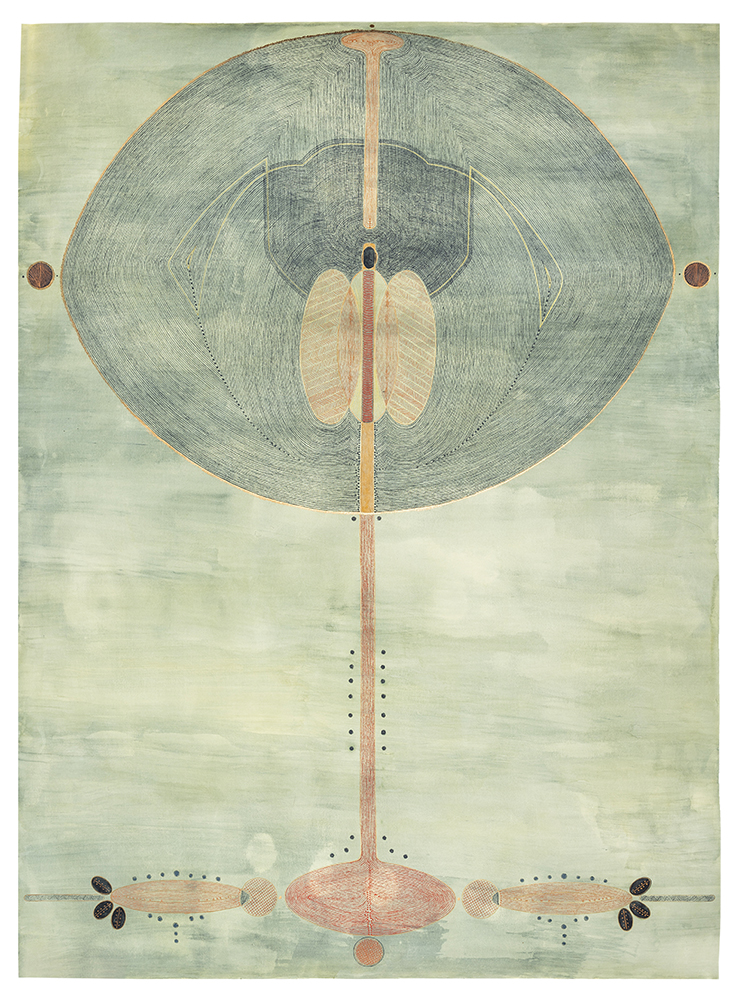
February, March 2021 Berlin
(Front) 2021 Watercolor, pastel pencil, oil sticks, needle holes on indigo and blackberry hand-dyed watercolor paper 59 x 43 in Photo: Luis Corzo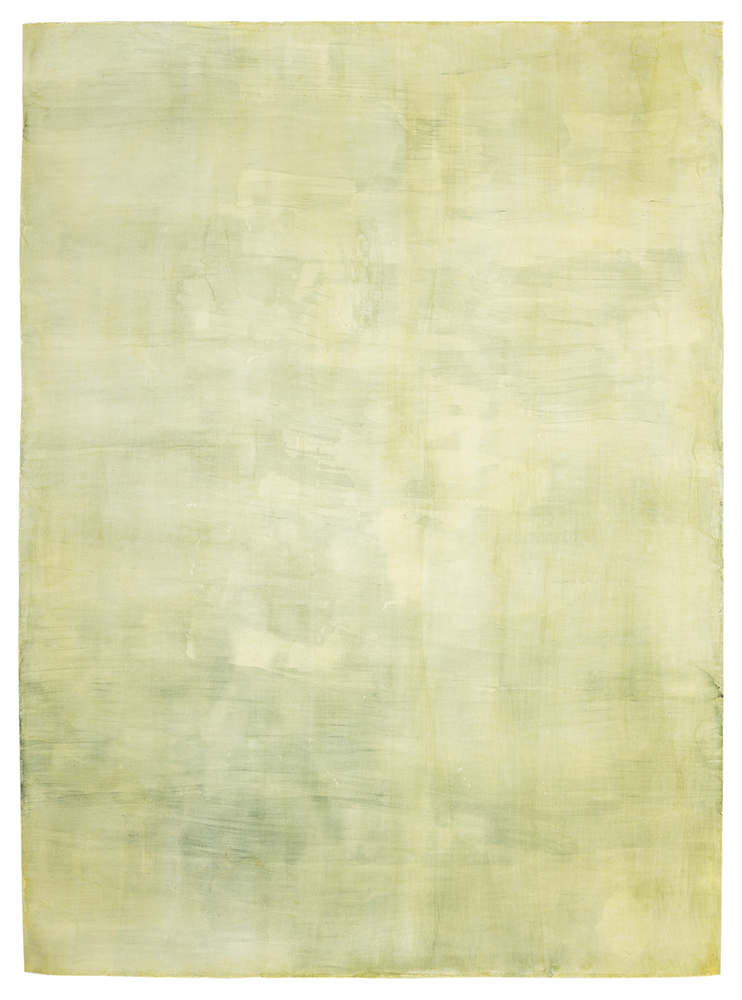
February, March 2021 Berlin
(Back) 2021 Watercolor, pastel pencil, oil sticks, needle holes on indigo and blackberry hand-dyed watercolor paper 59 x 43 in Photo: Luis Corzo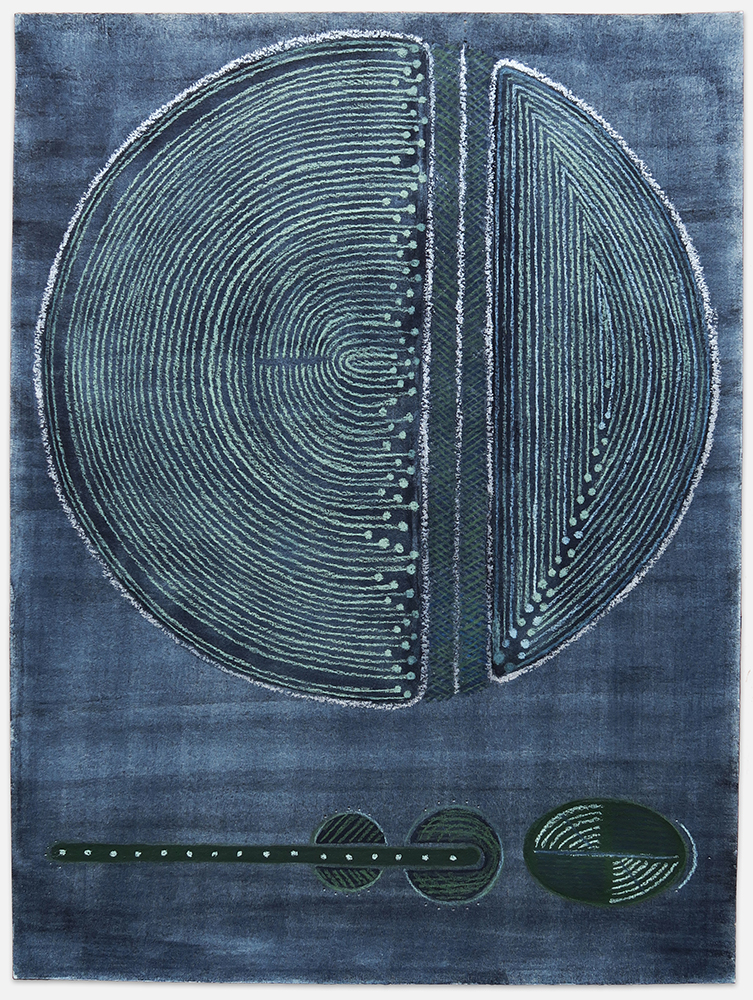
September Berlin 2020
(Front) 2020 Watercolor, pastel pencils, oil pastel, needle holes, watercolor paper dyed by hand with indigo 11.8 x 15.7 in Photo: Luis Corzo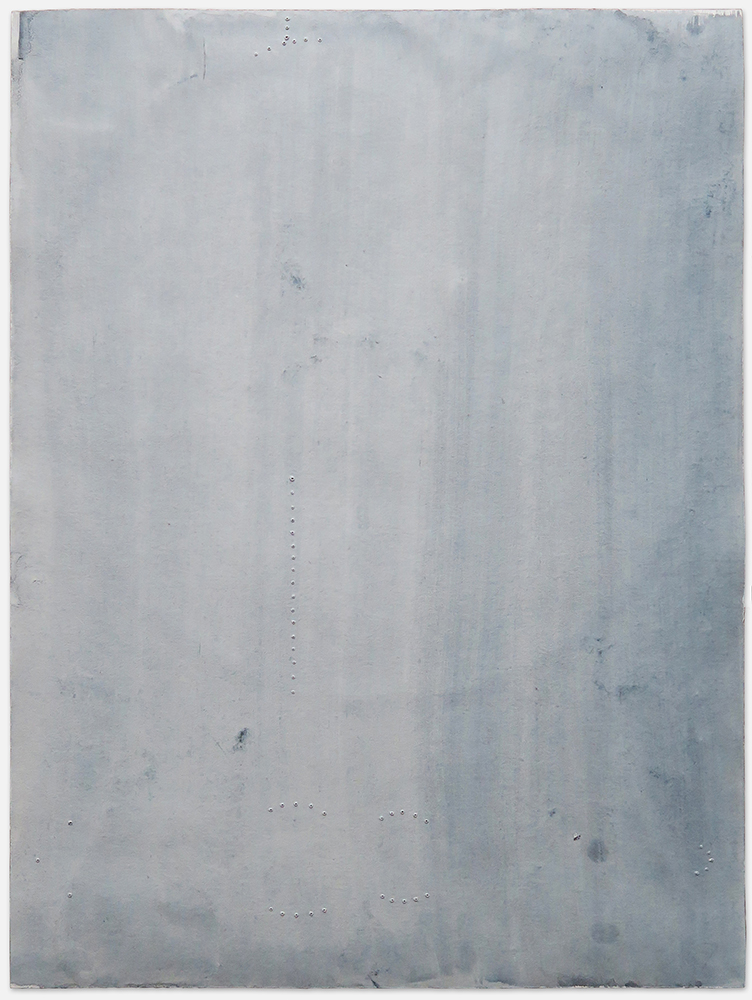
September Berlin 2020
(Back) 2020 Watercolor, pastel pencils, oil pastel, needle holes, watercolor paper dyed by hand with indigo 11.8 x 15.7 in Photo: Luis Corzo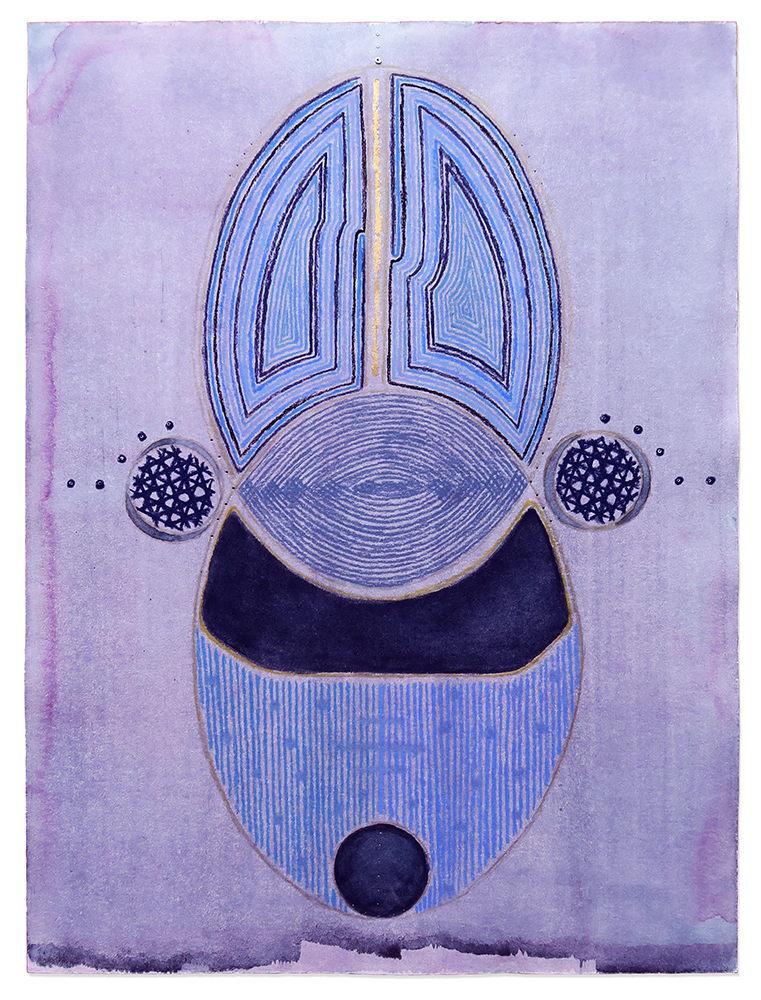
October, January Berlin 2020 / 2021
(Front) 2021 Watercolor, pastel pencil, oil pastel, needle holes on wild berries hand dyed watercolor paper 11.8 x 15.7 in Photo: Luis Corzo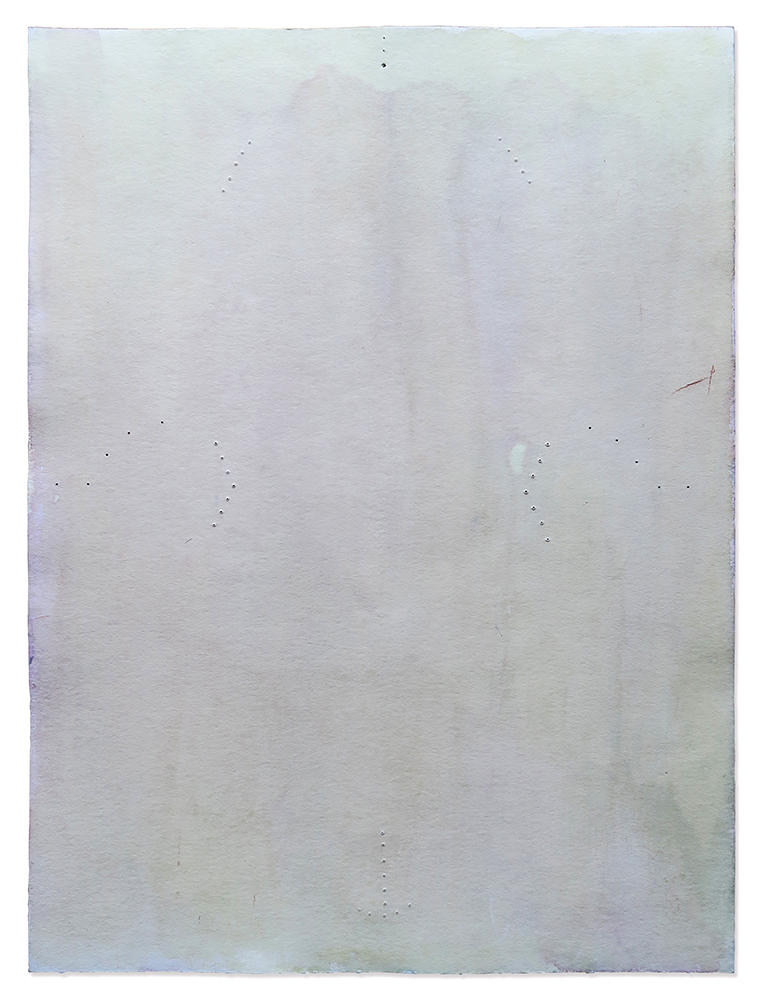
October, January Berlin 2020 / 2021
(Back) 2021 Watercolor, pastel pencil, oil pastel, needle holes on wild berries hand dyed watercolor paper 11.8 x 15.7 in Photo: Luis Corzo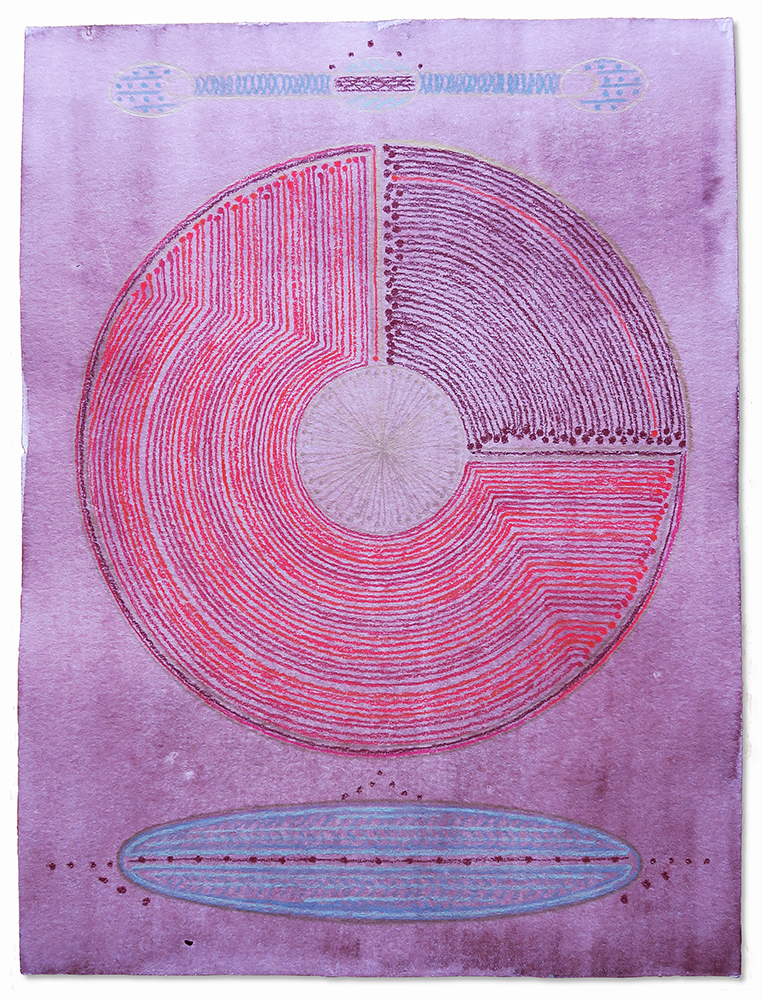
November, December Berlin 2020
(Front) 2020 Watercolor, pastel pencil, oil pastel, needle holes on wild berries and beetroot hand dyed watercolor paper 11.8 x 15.7 in Photo: Luis Corzo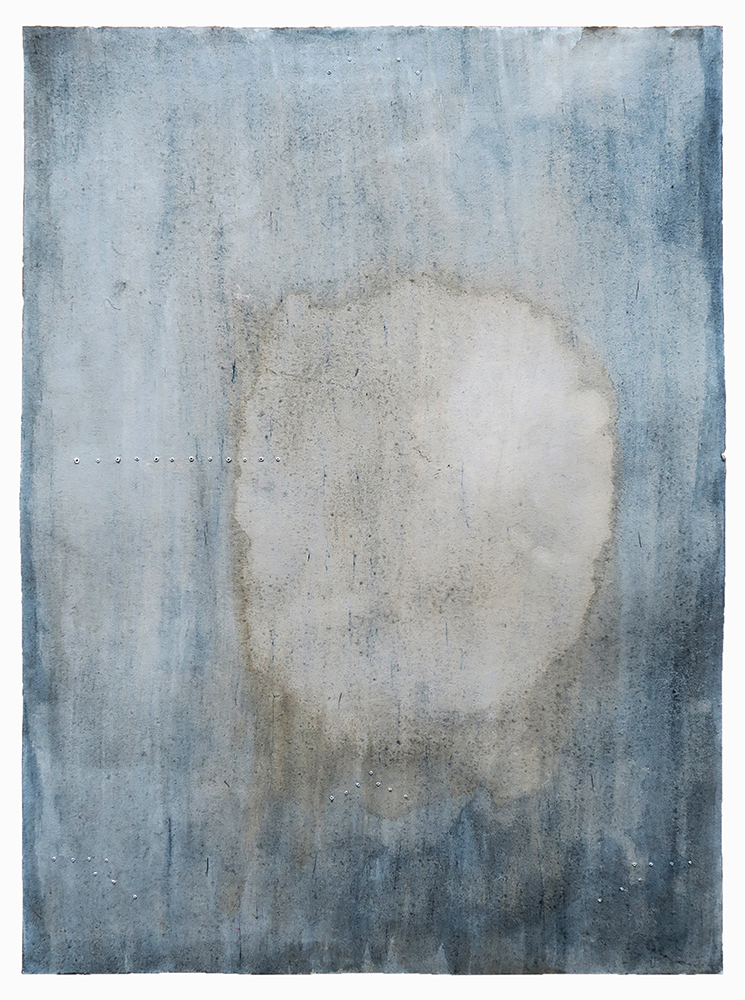
November, December Berlin 2020
(Back) 2020 Watercolor, pastel pencil, oil pastel, needle holes on wild berries and beetroot hand dyed watercolor paper 11.8 x 15.7 in Photo: Luis Corzo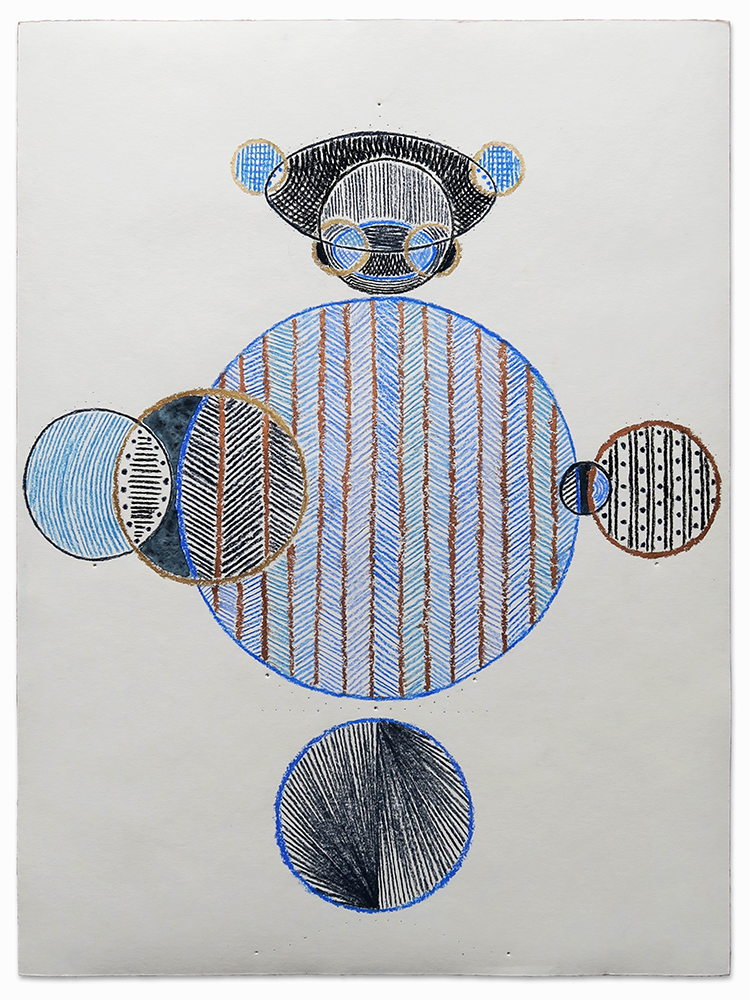
October, Berlin 2020
(Front) 2020 Watercolor, pastel pencil, oil pastel, charcoal needle holes watercolor paper 11.8 x 15.7 in Photo: Luis Corzo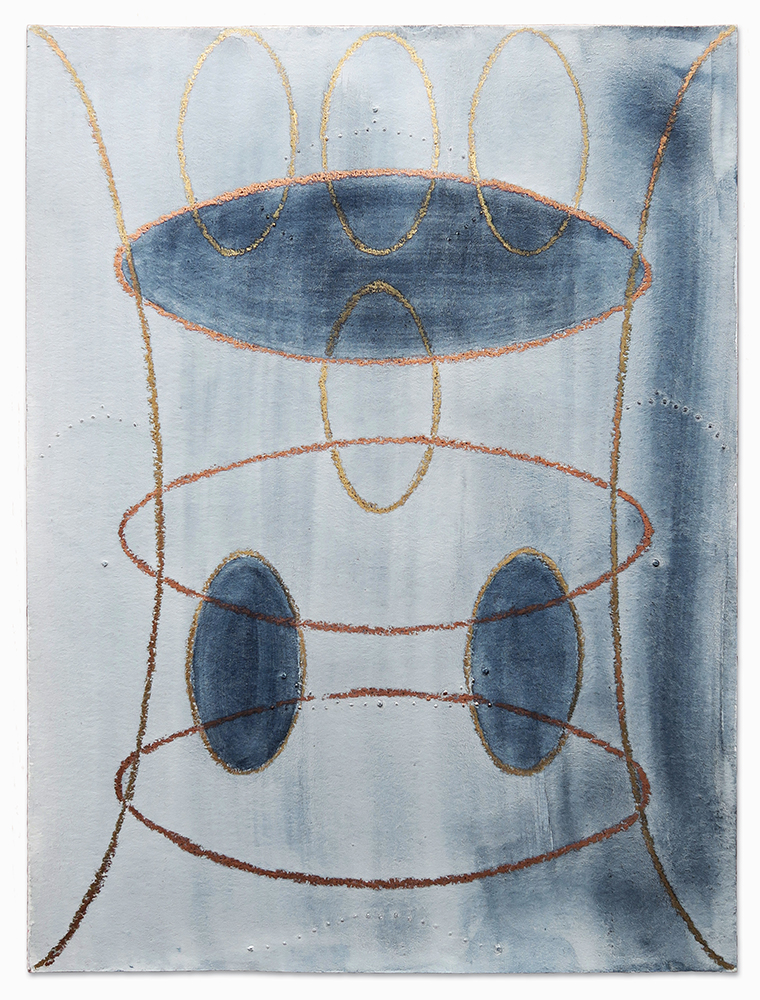
October, Berlin 2020
(Back) 2020 Watercolor, pastel pencil, oil pastel, charcoal needle holes watercolor paper 11.8 x 15.7 in Photo: Luis Corzo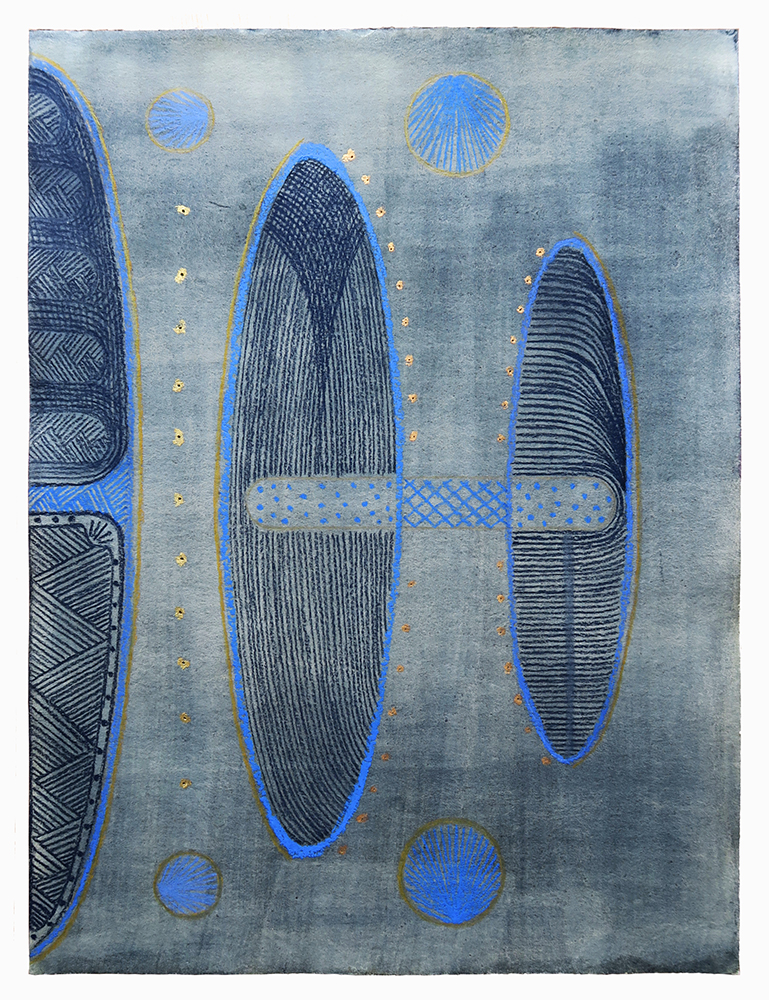
January Berlin 2021
(Front) 2021 Watercolor, pastel pencil, oil pastel needle holes on indigo hand dyed watercolor paper 11.8 x 15.7 in Photo: Luis Corzo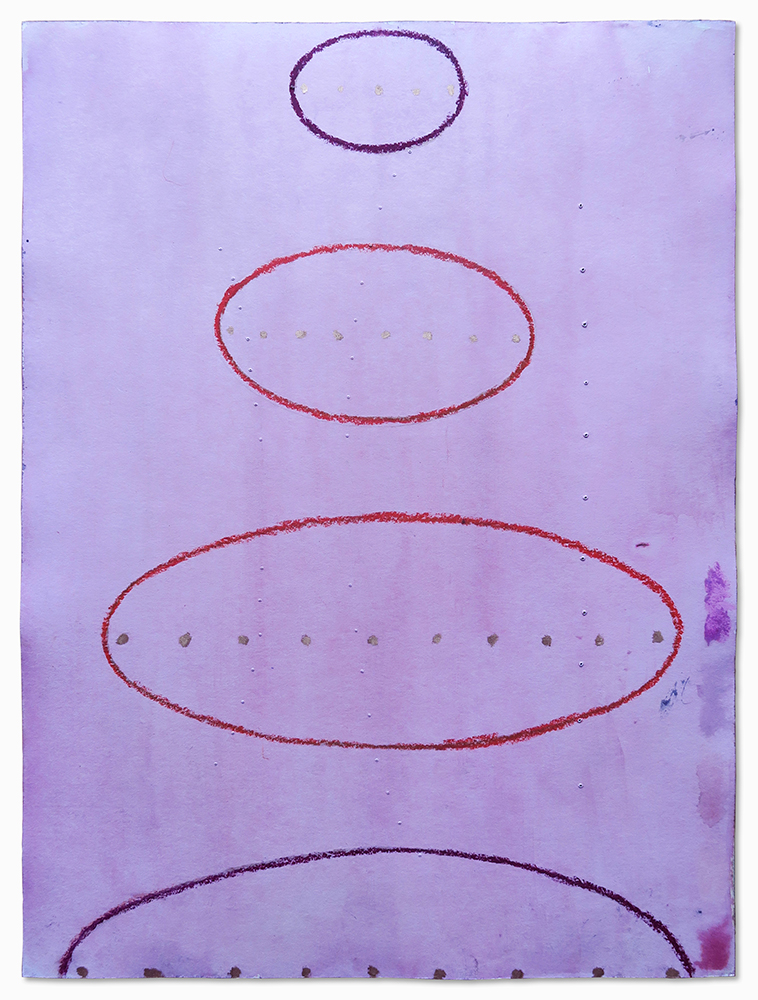
January Berlin 2021
(Back) 2021 Watercolor, pastel pencil, oil pastel needle holes on indigo hand dyed watercolor paper 11.8 x 15.7 in Photo: Luis Corzo

Johanna Unzueta
2022 Installation view Armory, New York Photo: Luis Corzo
Johanna Unzueta
2022 Installation view Armory, New York Photo: Luis Corzo
Johanna Unzueta
2022 Installation view Armory, New York Photo: Luis Corzo
Johanna Unzueta
2022 Installation view Armory, New York Photo: Luis Corzo
Johanna Unzueta
2022 Installation view Armory, New York Photo: Luis Corzo
May, June Berlin 2021
(Front) 2021 Watercolor, pastel pencil, oil sticks, needle holes, and cut paper on indigo hand-dyed watercolor paper 55 x 39.5 in Photo: Luis Corzo
May, June Berlin 2021
(Back) 2021 Watercolor, pastel pencil, oil sticks, needle holes, and cut paper on indigo hand-dyed watercolor paper 55 x 39.5 in Photo: Luis Corzo
October Zwischendeich 2021
(Front) 2021 Watercolor, pastel pencil, oil sticks, needle holes and cut paper on tinted watercolor paper (wild berry/ Kratzbeere) 60 x 45 in Photo: Luis Corzo
October Zwischendeich 2021
(Back) 2021 Watercolor, pastel pencil, oil sticks, needle holes and cut paper on tinted watercolor paper (wild berry/ Kratzbeere) 60 x 45 in Photo: Luis Corzo
October 2020 / February 2021 Berlin
(Front) 2021 Watercolor, pastel pencil, oil sticks and pin holes on wild berries hand-dyed paper 42.9 x 32.7 in Photo: Luis Corzo
October 2020 / February 2021 Berlin
(Back) 2021 Watercolor, pastel pencil, oil sticks and pin holes on wild berries hand-dyed paper 42.9 x 32.7 in Photo: Luis Corzo
February, March 2019 NY
(Front) 2019 Watercolor, pastel pencil, oil sticks, needle holes on indigo and fustic hand-dyed watercolor paper 35.4 x 35.4 in Photo: Luis Corzo
February, March 2019 NY
(Back) 2019 Watercolor, pastel pencil, oil sticks, needle holes on indigo and fustic hand-dyed watercolor paper 35.4 x 35.4 in Photo: Luis Corzo
February, March 2021 Berlin
(Front) 2021 Watercolor, pastel pencil, oil sticks, needle holes on indigo and blackberry hand-dyed watercolor paper 59 x 43 in Photo: Luis Corzo
February, March 2021 Berlin
(Back) 2021 Watercolor, pastel pencil, oil sticks, needle holes on indigo and blackberry hand-dyed watercolor paper 59 x 43 in Photo: Luis Corzo
September Berlin 2020
(Front) 2020 Watercolor, pastel pencils, oil pastel, needle holes, watercolor paper dyed by hand with indigo 11.8 x 15.7 in Photo: Luis Corzo
September Berlin 2020
(Back) 2020 Watercolor, pastel pencils, oil pastel, needle holes, watercolor paper dyed by hand with indigo 11.8 x 15.7 in Photo: Luis Corzo
October, January Berlin 2020 / 2021
(Front) 2021 Watercolor, pastel pencil, oil pastel, needle holes on wild berries hand dyed watercolor paper 11.8 x 15.7 in Photo: Luis Corzo
October, January Berlin 2020 / 2021
(Back) 2021 Watercolor, pastel pencil, oil pastel, needle holes on wild berries hand dyed watercolor paper 11.8 x 15.7 in Photo: Luis Corzo
November, December Berlin 2020
(Front) 2020 Watercolor, pastel pencil, oil pastel, needle holes on wild berries and beetroot hand dyed watercolor paper 11.8 x 15.7 in Photo: Luis Corzo
November, December Berlin 2020
(Back) 2020 Watercolor, pastel pencil, oil pastel, needle holes on wild berries and beetroot hand dyed watercolor paper 11.8 x 15.7 in Photo: Luis Corzo
October, Berlin 2020
(Front) 2020 Watercolor, pastel pencil, oil pastel, charcoal needle holes watercolor paper 11.8 x 15.7 in Photo: Luis Corzo
October, Berlin 2020
(Back) 2020 Watercolor, pastel pencil, oil pastel, charcoal needle holes watercolor paper 11.8 x 15.7 in Photo: Luis Corzo
January Berlin 2021
(Front) 2021 Watercolor, pastel pencil, oil pastel needle holes on indigo hand dyed watercolor paper 11.8 x 15.7 in Photo: Luis Corzo
January Berlin 2021
(Back) 2021 Watercolor, pastel pencil, oil pastel needle holes on indigo hand dyed watercolor paper 11.8 x 15.7 in Photo: Luis Corzo
Hilar, tejer, teñir (to spin, to weave, and to dye), are foundational skills learnt by Johanna Unzueta as the young apprentice of an indige- nous Mapuche woman in rural southern Chile, the artist’s home country. These competencies— the act of spinning, weaving, and dyeing woolen fiber through natural pigment processes — still inform her practice and overall understanding of certain notions of labor.
Unzueta’s production includes sculpture, drawing, video, performative actions, and objects made of cardboard and textile. Through these materials, the objects, and their presentation within specific architectural spaces and landscapes, Unzueta proposes a reflection on issues related to labor, its technological and historical unfolding and its impact on the human condition. Unzueta masterfully uses wool as a central marker and “thread” of this discussion. Her “handcrafted” approach implicates dialogue with the historical context of industrialization, its relationship to production, relevance for modernity, and economic and social impact.
Expanding on her previous work, her drawings are presented in displays resembling the exhibition design of architect Lina Bo Bardi, as free-standing drawings mounted into bases of recycled wooden beams. They are created through a process that can include dyeing the paperwith indigo, fustic, or other natural pigments, and puncturing the paper with needle holes. To create the shapes, Unzueta uses embroidery hoops from her collection of hundreds. The final results are delicate oval, circular, and geometric forms activated by light and conveying the sensibility of textiles. Through these subtle to complex gestures, Unzueta inscribes traces indigenous craft practices into the history of art, disrupting distinctions between art and craft practices into the history of art, disrupting distinctions between art and craft, the traditional and the contemporary, while maintaining a critical engagement with the idea of progress, notions of labor, and their implications for human existence. Moreover, her artistic interventions open and carry forward a dialogue with the history of geometric abstraction and conceptualism in Latin America.
— Fabiana Lopes
-
Art Basel Miami Beach 2022
Miami Beach
-
Frieze London 2022
London
-
Art Basel 2022
Basel
-
Frieze NY 2022
New York
2022
-
Art Basel Miami 2021
Miami
-
Artissima 2021
Turin
-
Artissima XYZ 2021
Turin
-
Frieze London 2021
London
2021
-
Liste Art Fair Basel 2021
Basel
-
The Armory Show 2021
Online
-
Art-o-rama 2021
Marseille
-
NADA x Foreland 2021
New York
-
NADA Miami 2020
Miami
-
Artissima XYZ 2020
Online
-
Liste Showtime 2020
Online
-
Frieze London 2020
Online
2020
-
NADA MIAMI 2019
Miami, USA
-
MECA 2019
San Juan, Puerto Rico
-
ART DÜSSELDORF 2019
Naufus Ramírez-Figueroa
Düsseldorf, Germany
-
Frieze London 2019
Hellen Ascoli
London, UK
2019
-
Chicago Invitational 2019
Elisabeth Wild
Chicago, USA
-
LISTE 2019
Basel, Switzerland
-
Frieze NY 2019
Naufus Ramírez-Figueroa
New York, USA
-
ArteBA 2019
Naufus Ramírez-Figueroa
Buenos Aires, Argentina
-
NADA Miami 2018
Miami, USA
-
Frieze London 2018
Johanna Unzueta
London UK
-
LISTE 2018
Akira Ikezoe
Basel, Switzerland
-
ArteBA 2018
Elisabeth Wild
Buenos Aires, Argentina
2018
-
NADA Miami 2017
Miami, USA
-
Frieze London 2017
Regina José Galindo
London, UK
-
LISTE 2017
Naufus Ramírez-Figueroa
Basilea, Switzerland
-
Frieze NY 2017
Akira Ikezoe
New York, USA
2017
-
NADA Miami 2016
Miami, USA
-
ARTBO 2016
Akira Ikezoe
Bogotá, Colombia
-
Frieze London 2016
London, UK
-
LISTE 2016
Naufus Ramírez-Figueroa
Basel, Switzerland
2016
-
NADA NY 2016
Akira Ikezoe
New York, USA
-
SP Arte 2016
Radamés “Juni” Figueroa
Sao Paulo, Brazil
-
ARCO Madrid 2016
Madrid, Spain
-
Material Art Fair 2016
Jorge de León
México, México
-
NADA Miami 2015
Miami, USA
-
ARTBO 2015
Naufus Ramírez-Figueroa
Bogotá, Colombia
-
LISTE 2015
Basel, Switzerland
-
NADA NY 2015
Elisabeth Wild
New York, USA
2015